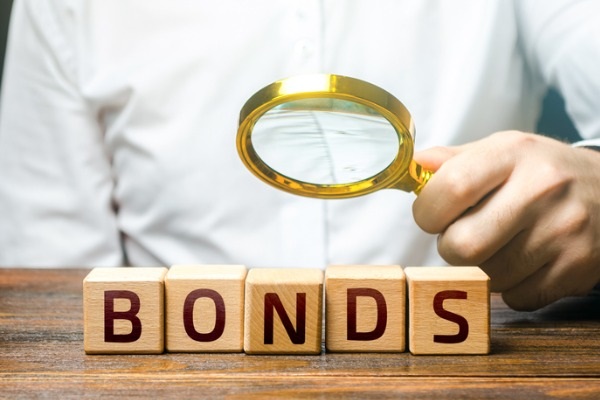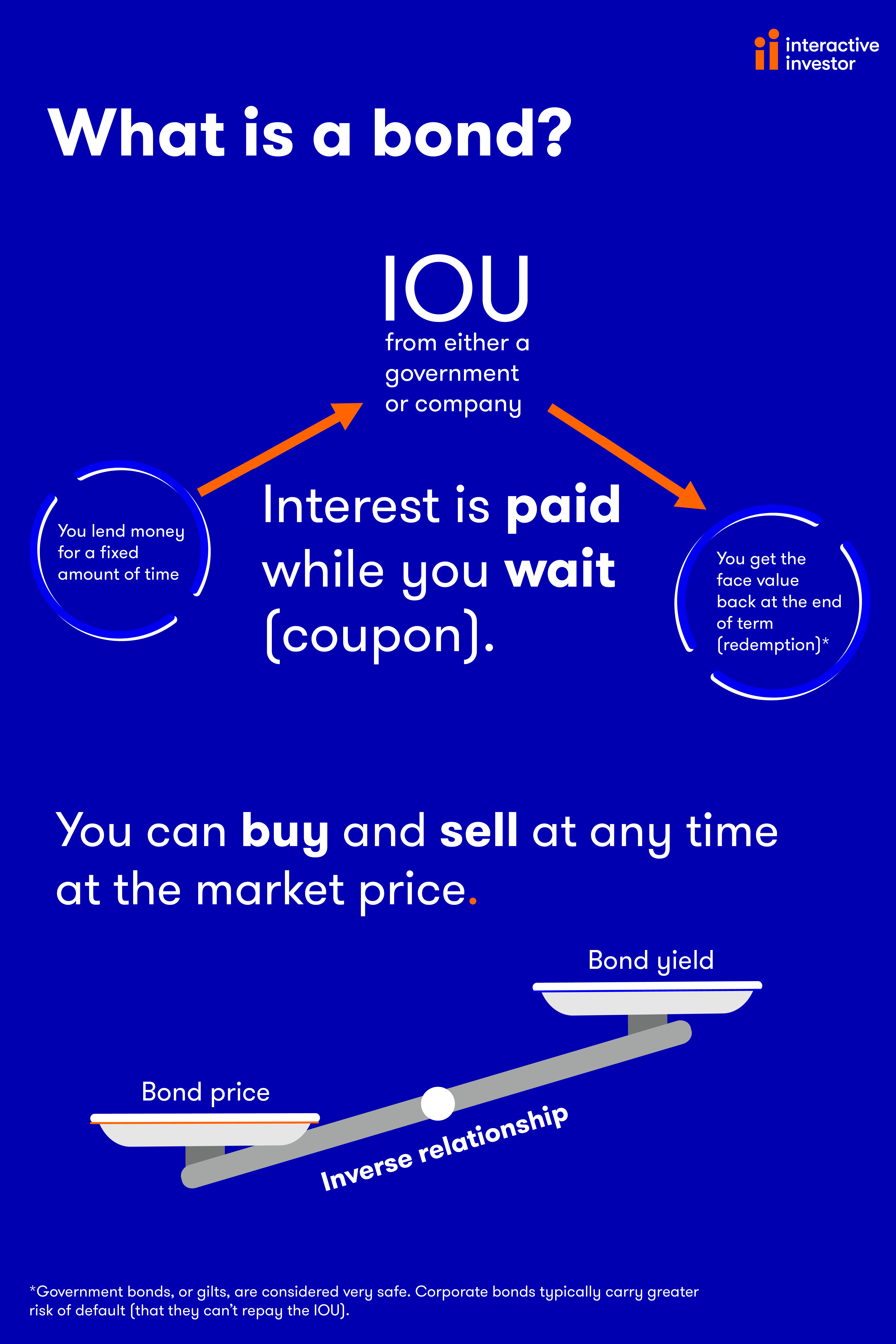Why bonds are back after a record-breaking sell-off
16th June 2022 09:29
by Sam Benstead from interactive investor
Value has been restored to ‘pockets’ of the bond market after more than a decade of unappealing income. It's time for investors to get excited about fixed income again.

Bond investors are in a tight spot, facing a dangerous combination of rising interest rates, high inflation and slowing economic growth.
Investors sell bonds when interest rates go up because they can get a better deal by buying newly issued debt. Inflation erodes the value of the fixed coupon (the interest rate based on the bond's face value) that bonds pay as an interest payment to bond owners, making returns less appealing. Moreover, economic problems increase the risk that companies default on their debt.
The Bank of England will also begin to sell its £20 billion corporate bond portfolio from September, unwinding its support for bond market valuations.
- Invest with ii: High Yield Bonds| Fixed Income Investing| Investing in Bonds
This means that bond prices have fallen in tandem with stock prices this year, rather than providing a protective buffer in difficult markets. The typical high yield bond fund has fallen 11% in 2022, while the typical corporate bond fund has fallen 12%.
In fact, investment manager Schroders calculated that the recent peak to trough sell-off in global bonds, a 17.6% fall from January 2021 to mid-May 2022, has been the biggest drop since data began in 1990. In contrast, bonds only fell 10.8% during the 2008 financial crisis.
Value restored
However, falling bond prices mean higher yields (they have an inverse relationship). As a result, investors can finally getting excited about fixed income following years of paltry coupon payments as central banks pushed rates to near zero to stimulate the economy after 2008.

Newly issued safe “investment grade” corporate bonds now yield around 4%. Sterling corporate bond funds now yield 2.5% on average, while high-yield bonds now yield 4.5%, according to numbers from investment database FE Fundinfo.
Investment manager BlackRock said this year’s dramatic sell-off had restored some “value in pockets of the market” and investment grade bonds now yielded more than at any point in the past decade, making it an attractive investment.
Likewise Schroders’ global head of fixed income Paul Grainger argues that the bond market’s record decline over the past 18 months now made it the best value for many years – and this coincided with an improving economic outlook for the asset class.
- A tactic to ride out the inflation storm using these funds and trusts
- The US funds beating the S&P 500 over the short and long term
- US stocks enter bear market, but there’s a silver lining for funds
He said: “Markets are pricing in almost eight rate hikes in the US, five for the UK and even four for the long-term dove, the European Central Bank. The number of rate hikes priced into next year are even higher. It is our view that many of these rate hikes will not be realised. As more investors come round to this view, this will cause government bond yields to fall due to rising prices.
“In principle, inflation is bad for bonds. The fixed value of bond interest payments and principal is eroded in real terms as inflation rises. However, bond markets have proved efficient and quickly discounted the higher inflation regime. Bond investors are now compensated with higher yields. If inflation were to peak, as we think it will, this would be a big boon for bonds.”
Uncertainty ahead
Stephen Snowden, head of fixed income at fund manager Artemis, says this 4% yield on safe company debt “looks interesting” and it was time for investors to think about ending their heavy underweight positions in fixed income.
“Be prepared to get back in. We are not yet ready for a big market rally, but we can see the bottom of the hill,” he said.
One “go anywhere” investor who is taking action is David Coombs, head of multi-asset investments at fund manager Rathbones. He has been buying bonds at the greatest rate for five years after sitting on the sidelines.
- Recessions are becoming more likely – here’s how to invest
- How Terry Smith is investing as markets crash
He said: “Part of the reason for not buying bonds over the past five years was that we didn't think corporate bonds brought much to the party in terms of risk mitigation as they are clearly exposed to individual company risk and so they can be correlated to equities.
“Because of zero interest rates for the last 14 years, this meant low returns compared with the stock market. Corporate bonds therefore did not have much of a place in our portfolios.”
However, Coombs is now buying bonds again for their attractive yields. He has bought a bond from a household name company, with two years to maturity, with a yield of 8.5% a year.
He said: “The two-year UK government bond (known as a gilt) yields around 1.4%, so the income we are getting is almost 7% above that. When the bond was issued it was around 4% above government bonds. The yield is now attractive for us.
“Inflation is 9% or 10% now, but over the next two years I am pretty convinced it will drop significantly. If it averages out at 3% or 4% for two years then we get a real return of about 4% from the bond."
Paul Flood, a multi-asset portfolio manager at Newton Investment Management, has also started increasing exposure to bonds on the back of US 10-year government bonds now yielding more than they have at any time over the last decade.
However, he cautions: “With inflation remaining above expectations, and a recent US Consumer Prices Index reading of 8.6%, real returns still aren’t that attractive and central banks remain under pressure to raise the pace of interest rates increases.”
While Snowden notes that bonds will still give investors a real loss when factoring in inflation, he said the return would be better than cash, which made them appealing.
However, his overall investment strategy is “short duration,” meaning that he thinks that bonds will sell off further and is more worried about rising interest rates than his peers.
He said: “The scale of our short duration position has been moderated given the recent sell-off in bonds and the subsequent move up in yields. There are lots of interest rate hikes already priced in, so there could be a good bond-buying opportunity over the next few months. However, there is a lot of uncertainty at the moment.”
Default risk
One big risk of bonds, outside of interest rate changes and inflation, is the risk that they default on their debt. This risk grows when economies go into recessions, as some are forecasting will happen towards the end of this year or into next year.
Jim Reid, head of thematic research at Deutsche Bank, says that corporate bond defaults will rise following a 20-year period of low defaults.
He said: “Nothing much will change for the remainder of 2022, but after that we think we might be coming to the end of the ultra-low default world. First, we will likely have a cyclical US recession to address in 2023, and after that, a risk of the reversal of trends that have made the last 20 years.
“We had been convinced the ultra-low default world would hold for as far as the eye can see. However, this year we speculate that things might become more difficult for corporates in the years ahead.”
- Bargain Hunter: Baillie Gifford trusts are cheap, time to buy?
- Listen to our interview with Scottish Mortgage
- How to play the market rotation: fund, trust and ETF ideas
Reid calculated that, assuming there is a recession in America at the end of 2023, high yield bond defaults would first climb to 5% at the end of 2023 and then hit just over 10% by the end of 2024. In Europe, he forecasts a high yield default rate of 3.8% by the end of 2023 and 6.6% by the end of 2024.
He said that this was because of inflation and its impact on companies' ability to stay solvent.
“We had previously been relaxed about higher inflation vis-à-vis defaults as we thought the authorities would still have to heavily rely on financial repression (letting inflation rise to reduce the real cost of debt) to ensure the mammoth global debt pile could be smoothly financed in such a world.
“However, we now think that such a scenario might be more challenging for funding than we've believed in years gone by. Although financial repression will likely stay to some degree, policymakers may find it more difficult to pull all the easy policy levers as they've done in the last few decades,” he said.
These articles are provided for information purposes only. Occasionally, an opinion about whether to buy or sell a specific investment may be provided by third parties. The content is not intended to be a personal recommendation to buy or sell any financial instrument or product, or to adopt any investment strategy as it is not provided based on an assessment of your investing knowledge and experience, your financial situation or your investment objectives. The value of your investments, and the income derived from them, may go down as well as up. You may not get back all the money that you invest. The investments referred to in this article may not be suitable for all investors, and if in doubt, an investor should seek advice from a qualified investment adviser.
Full performance can be found on the company or index summary page on the interactive investor website. Simply click on the company's or index name highlighted in the article.